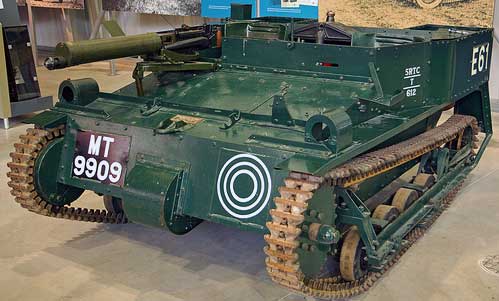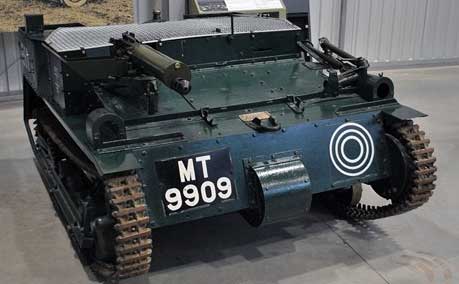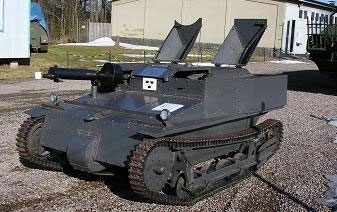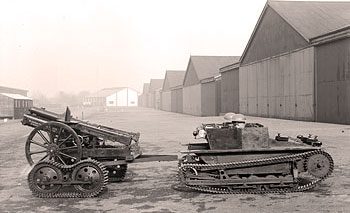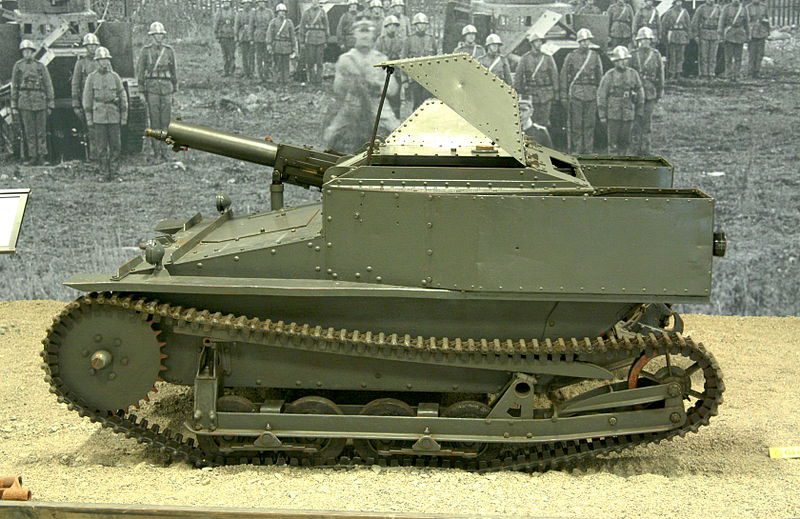
Tankette “Carden-Loyd” Mk.IV
Content
Tankette “Carden-Loyd” Mk.IVCarden Loyd Tankette.
The tankette had a low armored body, in the center of which the engine was located. On either side of him were two crew members: on the left - the driver, and on the right - the shooter with the Vickers machine gun mounted openly. The torque from the engine through a planetary gearbox and an automobile differential was fed to the drive wheels of the caterpillar undercarriage located in front of the machine. The undercarriage included four rubber-coated road wheels of small diameter with a blocked suspension on leaf springs. The tankette was distinguished by its simplicity of design, mobility and low cost. It was supplied to 16 countries of the world and in some cases served as a catalyst for the development of new types of armored vehicles. The tankette itself was soon removed from service with combat units, as it had too weak armor protection, and the limited space of the fighting compartment did not allow the effective use of weapons.
From the historyThe prototype of many European tankettes is considered to be the British Cardin-Lloyd tankette, and although these vehicles were not very successful in the British army, the “Universal Carrier” armored personnel carrier was made on their basis, which was an elongated and reconfigured tankette. These machines were produced in huge numbers and were often used for the same purposes as tankettes. The first designs of tankettes were created in the USSR already in 1919, when the projects of an “all-terrain armored machine gun” by engineer Maksimov were considered. The first of these involved the creation of a 1-seat tankette armed with one machine gun weighing 2,6 tons with an 40 hp engine. and with armor from 8 mm to 10 mm. The highest speed is 17 km / h. The second project, recognizable under the name “shield-carrier”, was close to the first, but differed in that the only crew member was reclining, which made it possible to quickly reduce the size and reduce the weight to 2,25 tons. The projects were not implemented.
In the USSR, they were intensively promoted by M.N. Tukhachevsky, who was appointed in 1931 the chief of armaments of the Workers 'and Peasants' Red Army (RKKA). In 1930, he achieved the release of the training film "Wedge Tank" to promote the latest weapons, while he wrote the script for the film himself. The creation of tankettes was included in the promising plans for the manufacture of armored weapons. In accordance with the 3-year tank building program adopted on June 2, 1926, by 1930 it was supposed to make a battalion (69 units) of tankettes (“escort machine guns”, in the then terminology).
In 1929-1930. there is a project of the T-21 tankette (crew - 2 people, armor - 13 mm). The design used the nodes of the T-18 and T-17 tanks. The project was rejected due to insufficient vehicle mobility. Approximately at the same time, projects for the T-22 and T-23 tankettes were proposed, classified as “large escort tankettes”. Among themselves, they differed in the type of motor and the placement of the crew. After considering projects for the production of a prototype, the T-23 was chosen as cheaper and easier to build. In 1930, a test sample was made, during the production process it was subjected to almost all the modifications that changed it almost beyond recognition. But this wedge did not go into production either because of the high cost, comparable to the cost of the T-18 escort tank. On August 9, 1929, requirements were put forward for the creation of a wheeled-tracked tankette T-25 weighing less than 3,5 tons, with an engine of 40-60 hp. and a speed of 40 km / h on tracks and 60 km / h on wheels. A competition was announced for the creation of the machine. In November 1929, out of two submitted projects, one was chosen, which was a reduced tank of the Christie type, but with a number of improvements, in particular, with the ability to move afloat. The development of the project encountered great difficulties and was closed in 1932, not brought to the production of an experimental sample due to the high cost.
In 1930, a commission headed by Khalepsky (head of the UMM) and Ginzburg (head of the tank engineering design bureau) arrived in the UK to get acquainted with samples of foreign tank building. The Carden-Loyd Mk.IV wedge was demonstrated - the most successful in its class (it was exported to sixteen countries of the world). It was decided to purchase 20 tankettes and a license for production in the Soviet Union. In August 1930, the tankette was shown to representatives of the command of the Red Army and made a good impression. It was decided to organize its large-scale production. Under the terms of the Versailles Peace Treaty, Germany, defeated in the First World War, was forbidden to have armored troops, except for an insignificant number of armored vehicles for the needs of the police. In addition to political circumstances, in the 1920s, economic prerequisites also prevented this - the German industry, devastated by the war and weakened by post-war reparations and rejections, was actually incapable of producing armored vehicles. All the same, since 1925, the Reichswehr Arms Directorate has been secretly working on the development of the latest tanks, which in 1925-1930 led to the development of a pair of prototypes that did not go into series due to the numerous design flaws identified, but served as the basis for the upcoming development of German tank building ... In Germany, the development of the Pz Kpfw I chassis was carried out as part of the initial requirements, implying the creation of, practically, a machine-gun tankette, but in 1932 these values were changed. With the growing interest in the military circles of the Reichswehr in the capabilities of tanks, in 1932 the Armaments Directorate organized a competition for the creation of a light tank weighing up to 5 tons. In the Wehrmacht, the PzKpfw I tank was somewhat analogous to tankettes, but it was twice as large as a regular tankette, and was heavily armed and armored.
Despite the big drawback - insufficient firepower, tankettes were successfully used for reconnaissance and combat security tasks. Most of the tankettes were controlled by 2 crew members, although there were also single models. Some models did not have towers (and together with a caterpillar engine, this is often seen as a definition for the concept of a tankette). The rest had very ordinary hand-rotated turrets. The standard armament of the tankette is one or two machine guns, occasionally a 2-mm cannon or a grenade launcher. The British Carden-Loyd Mk.IV tankette is considered “classic”, and almost all other tankettes were modeled on its basis. The French light tank of the 1930s (Automitrailleuses de Reconnaissance) was a tankette in shape, but specially designed for reconnaissance in front of the main forces. Japan, in turn, became one of the most zealous users of wedges, producing a number of models necessary for the war in the tropical thickets. The performance characteristics of the Cardin-Lloyd VI tankette
Sources:
|
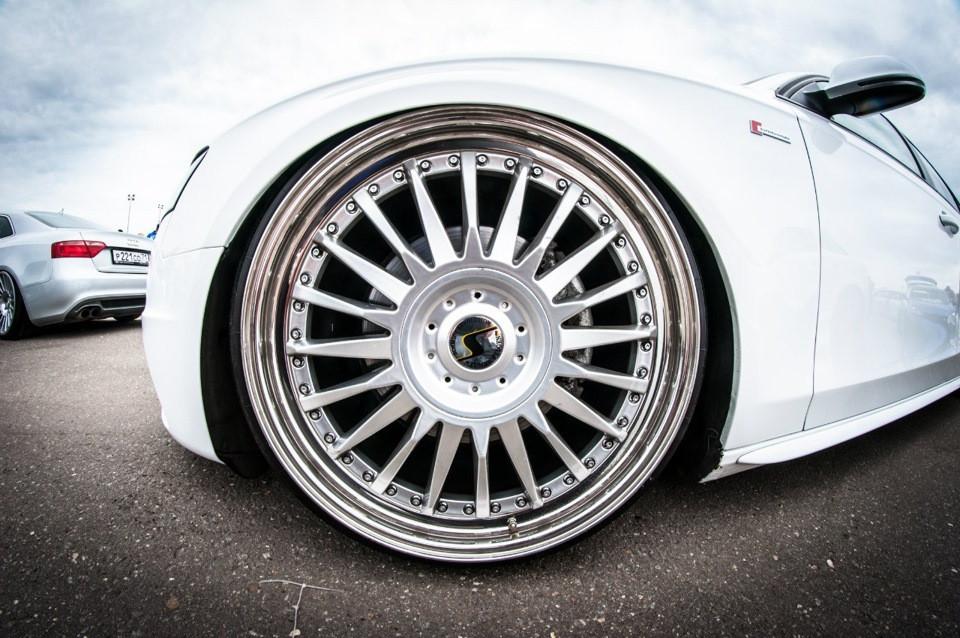
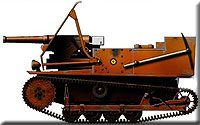 At the end of the twenties, the idea of “mechanization” of infantry or the addition of armored infantry to the armored forces, when each infantryman has his own combat vehicle, a tankette, soared in the minds of military theorists of almost all the powers of the world. It soon became clear that one person was not able to simultaneously perform the functions of a driver, gunner, radio operator, etc. Single tankettes were soon abandoned, but they continued to experiment with double ones. One of the most successful tankettes was designed by the English major G. Mertel in 1928. It was called “Carden-Lloyd” by the name of the manufacturer.
At the end of the twenties, the idea of “mechanization” of infantry or the addition of armored infantry to the armored forces, when each infantryman has his own combat vehicle, a tankette, soared in the minds of military theorists of almost all the powers of the world. It soon became clear that one person was not able to simultaneously perform the functions of a driver, gunner, radio operator, etc. Single tankettes were soon abandoned, but they continued to experiment with double ones. One of the most successful tankettes was designed by the English major G. Mertel in 1928. It was called “Carden-Lloyd” by the name of the manufacturer.